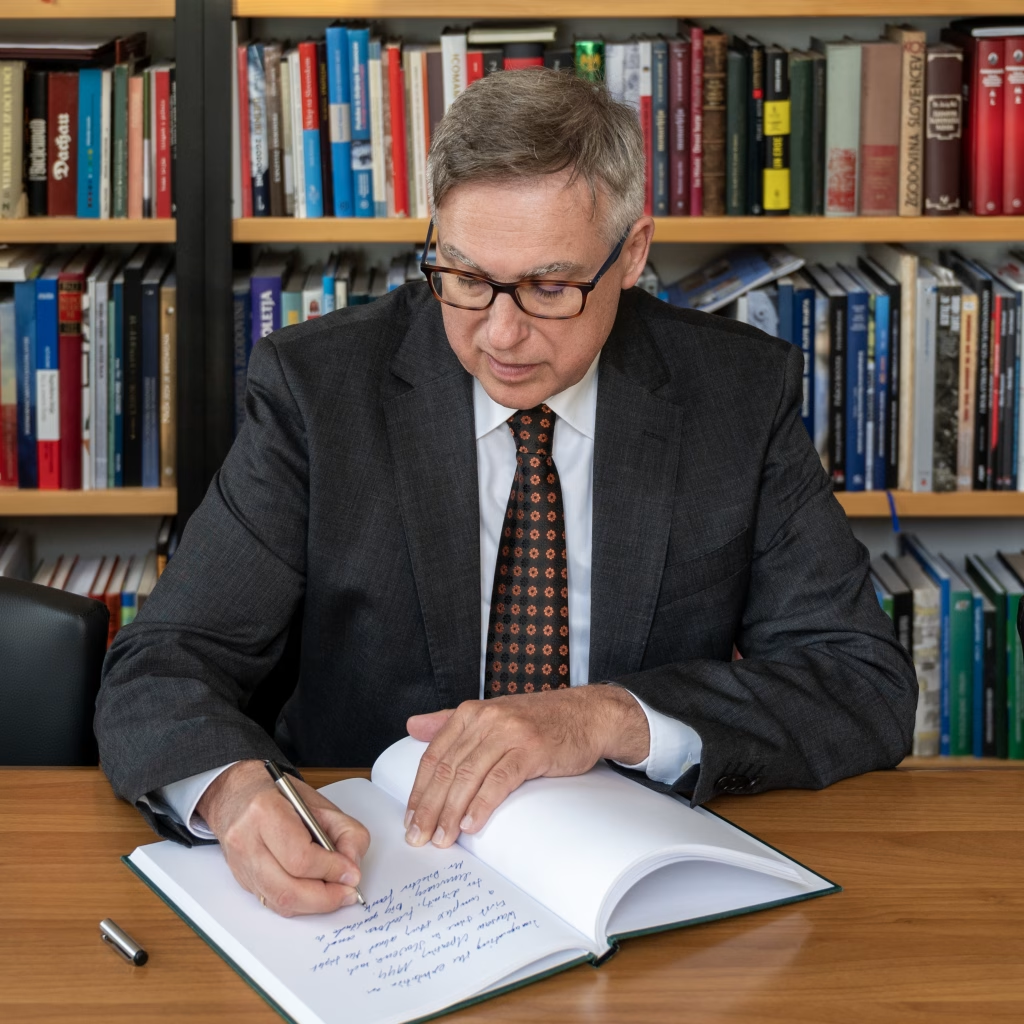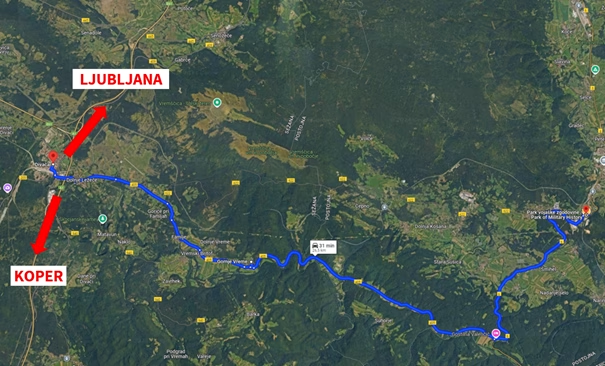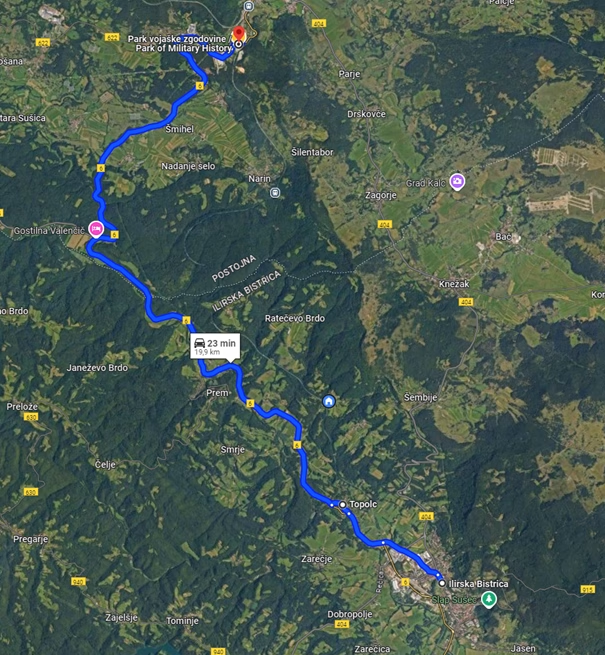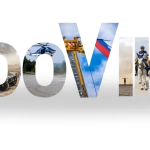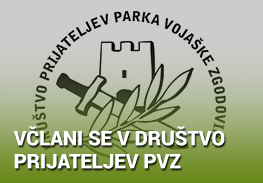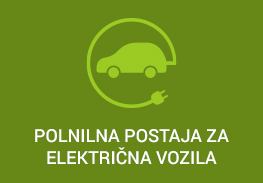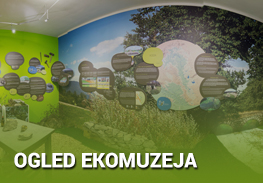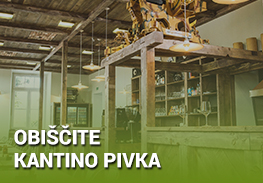“The Park of Military History among the finalists of the My Country 2024 initiative.”
The Tourist Association of Slovenia annually evaluates the hospitality and tourist offerings of various locations as part of the “MY COUNTRY” initiative.
According to the assessment of the expert committee, the Park of Military History has earned a place among the top 5 in the category of TOURIST ATTRACTIONS.
The location that receives the most votes in the online poll will be awarded the Hospitality Mark, as chosen by the public.
You can cast your vote for the Park of Military History once a day from 3rd to 20th October 2024.
Link to the poll: https://turisticna-zveza.si/spletno-glasovanje/moja-dezela-2024/132
We kindly invite you to vote!
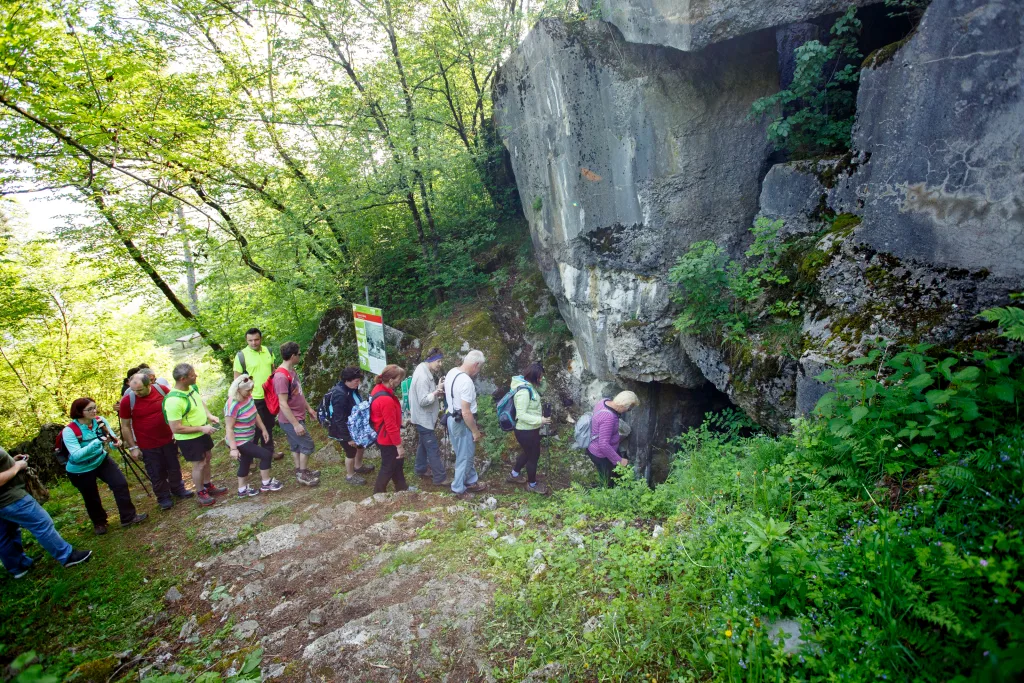
History weekend The Park of Military History kicked off the autumn season with the History Weekend
At the Park of Military History, despite the less-than-ideal weather, the programme of the traditional History Weekend was bursting with lively events. The Park’s team, in collaboration with its partners, organised a multi-day museum event aimed at an in-depth exploration and experience of history.
As an introduction to History Weekend, the traditional “Vestirnga 2024” took place on Friday within the museum complex. The Postojna Defence Administration conducted an orientation for the 2006 generation of military conscripts, who, in line with tradition, arrived on richly decorated conscription carts. The Slovenian Armed Forces also showcased some of their equipment and vehicles at the event.
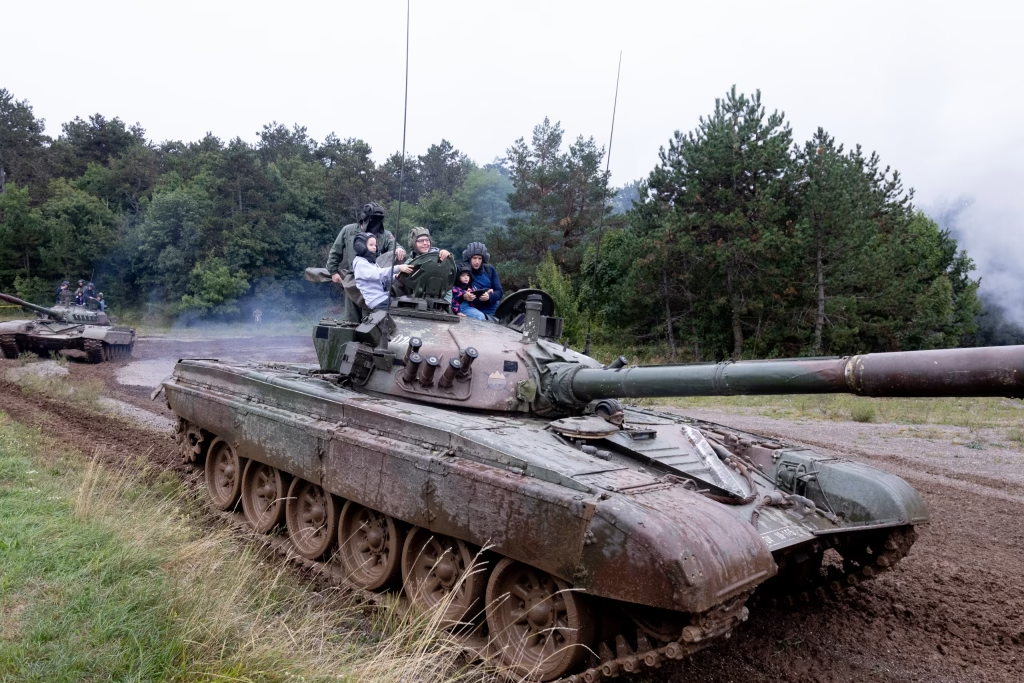
Saturday’s events were largely marked by the Open Day at the Stanislav Požar Barracks in Pivka, which attracts a large number of visitors from near and far every year, particularly due to the tank rides. The Park itself was also bustling with activity, starting with a guided morning hike to the underground fortification at Primož. Throughout the day, the museum hosted guided tours of the exhibitions and children’s workshops.
The highlight of Saturday’s events was the opening of a new exhibition titled “Slovenia Under a Hail of Bombs – Allied Bombing 1944–1945,” curated by historian Sašo Radovanovič. This exhibition commemorated the 80th anniversary of Allied bombing campaign and revived the historical memory of those events. The author presented the Park of Military History with an extensive collection of materials gathered during years of research on the subject comprising of electronic copies of 130,000 documents with data and photographs of the bombings in Slovenia, as well as other parts of Central, Southern, and Eastern Europe. The valuable materials, mainly from the Air Force Historical Research Agency (AFHRA), will enable the Park to establish a comprehensive database of events during the Second World War. At the exhibition opening, Slovenian writer Tone Partljič shared his childhood memories of the bombing of his hometown Maribor and officially opened the exhibition.
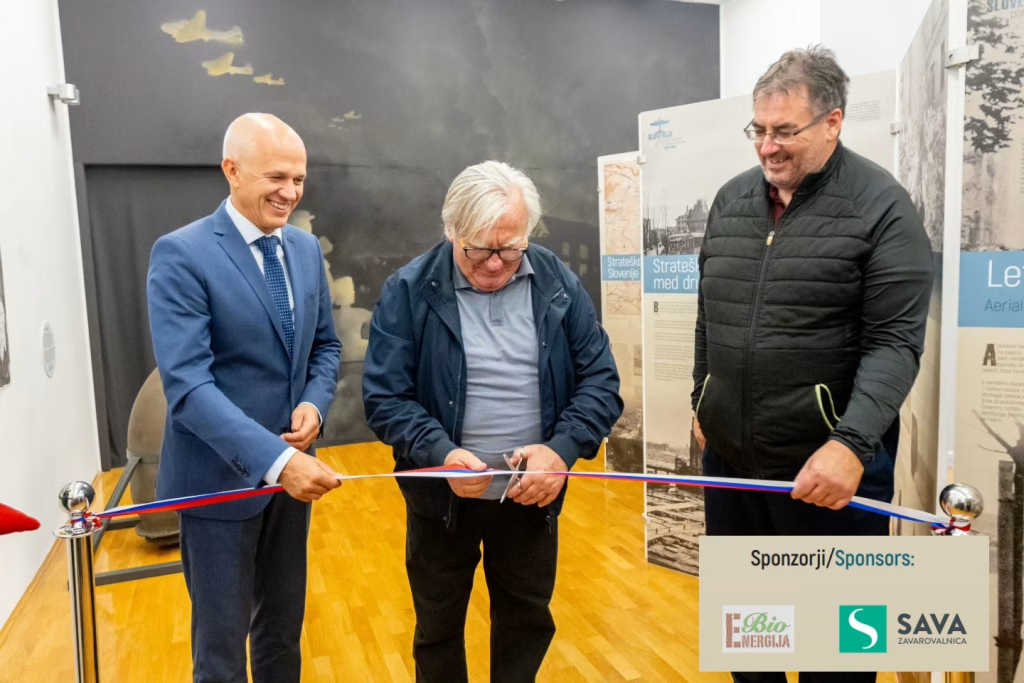
In the afternoon, in collaboration with the Embassy of the Republic of Poland and the Centre of Jewish Cultural Heritage Synagogue Maribor, the Park organised a screening of the new documentary Punčuh: The Righteous Among the Nations in Warsaw, followed by a lecture by Boris Hajdinjak, the director of the Synagogue in Maribor. He presented the life and work of France Punčuh, born in 1902 in Logatec. During the Second World War, Punčuh heroically aided the Jews in Warsaw and was killed during the Warsaw Uprising in 1944. Posthumously, he was awarded the honorary title of Righteous Among the Nations for his selfless assistance and heroic actions.
The Sunday activities of this year’s History Weekend began early with a hike to Primož, followed by a professional guided tour of the interior of the Alpine Wall fortification, organised by the Rapallo Border Historical Society.
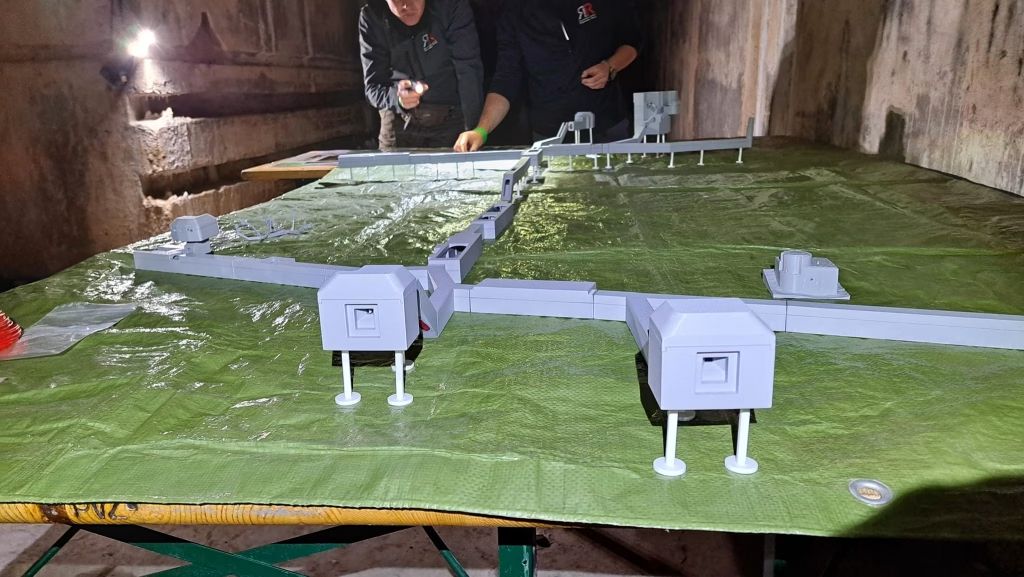
One of the highlights of Sunday’s events was undoubtedly the ceremony marking the completion of the first phase of the restoration of the police vessel P-111. During the ceremony, the Minister of the Interior, Mag. Boštjan Poklukar, officially unveiled the renovated vessel and its interior for the visitors. The attendees were also addressed by the Director General of the Police, Mag. Senad Jušić.
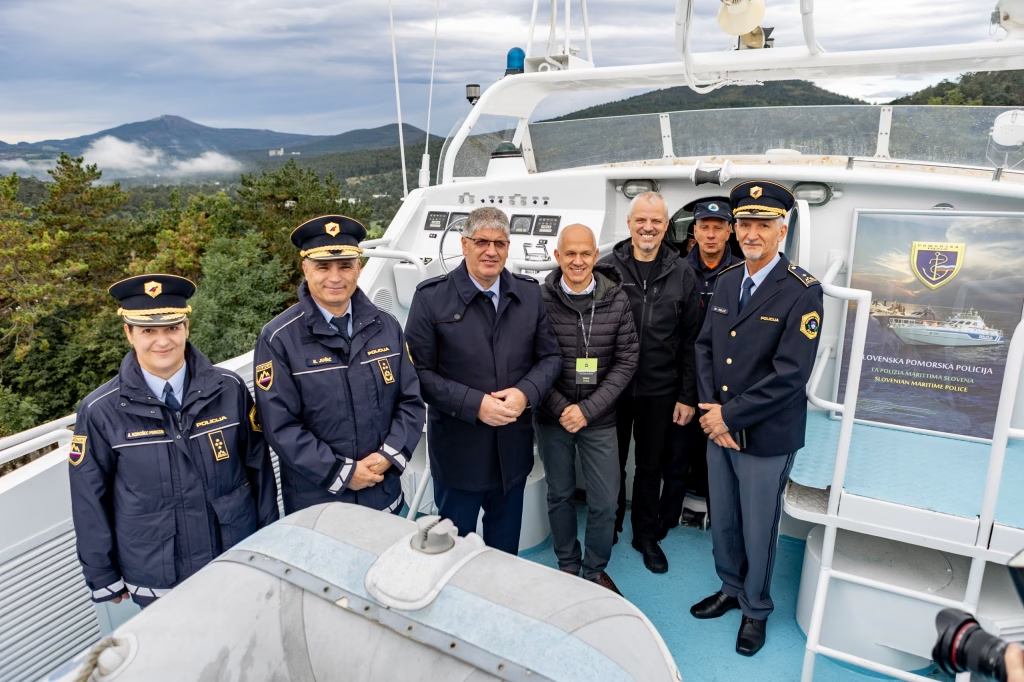
As part of the central programme, the Slovenian Armed Forces and the Police showcased their equipment and abilities to the visitors. The participating units, in addition to a static display of equipment, also prepared a dynamic demonstration of operational activities in the field. The Police presented the work of bomb disposal technicians from the Special Police Unit and numerous other units, highlighting the various aspects of police work from different perspectives. Firefighters from the Volunteer Firefighting Society Postojna demonstrated rescue operations in the event of a traffic accident. The Special Operations Unit and the 15th Brigade of Military Aviation and Air Defence captivated visitors with a demonstration of rescuing a downed pilot. Enthusiasts of military technical heritage were particularly drawn to dynamic presentations on the training ground, featuring demonstration drives of armoured vehicles from the operational collection of the Slovenian Armed Forces Museum and the Park of Military History
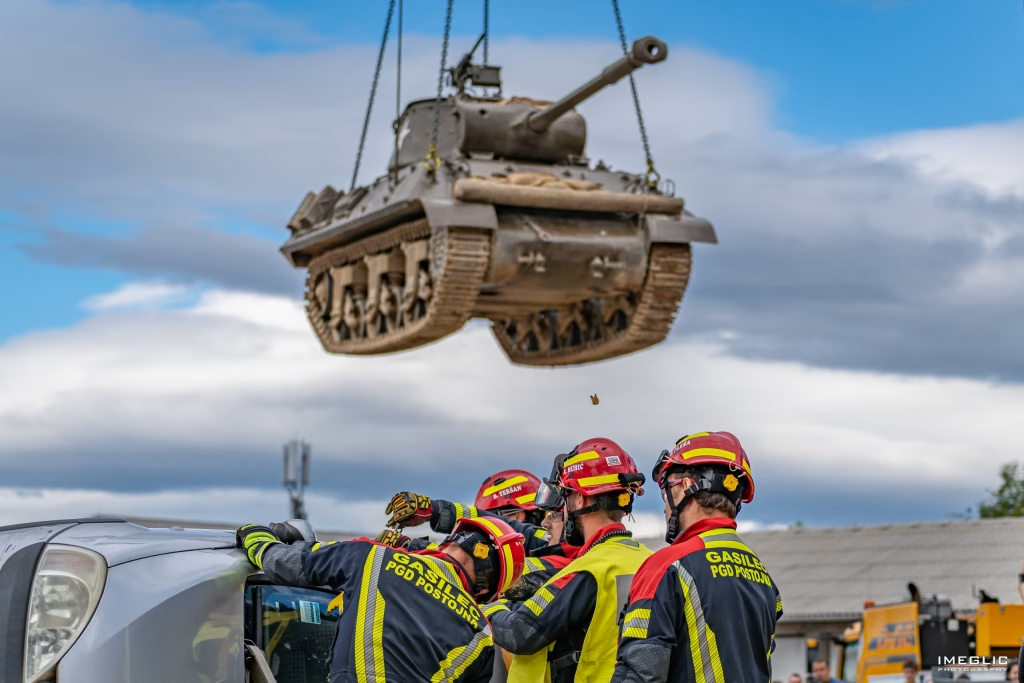
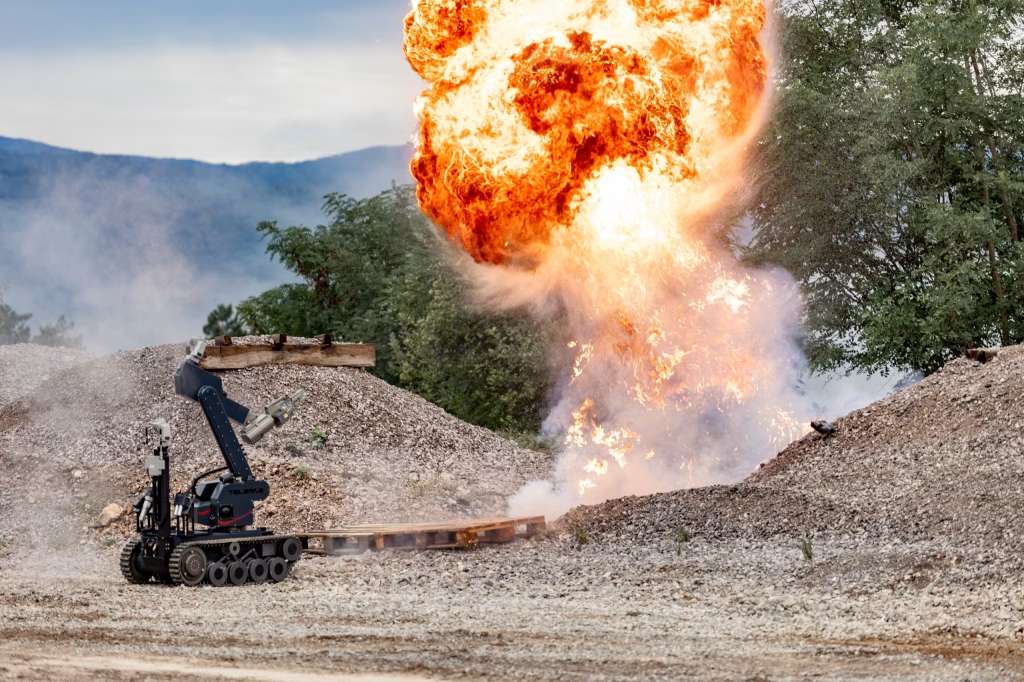
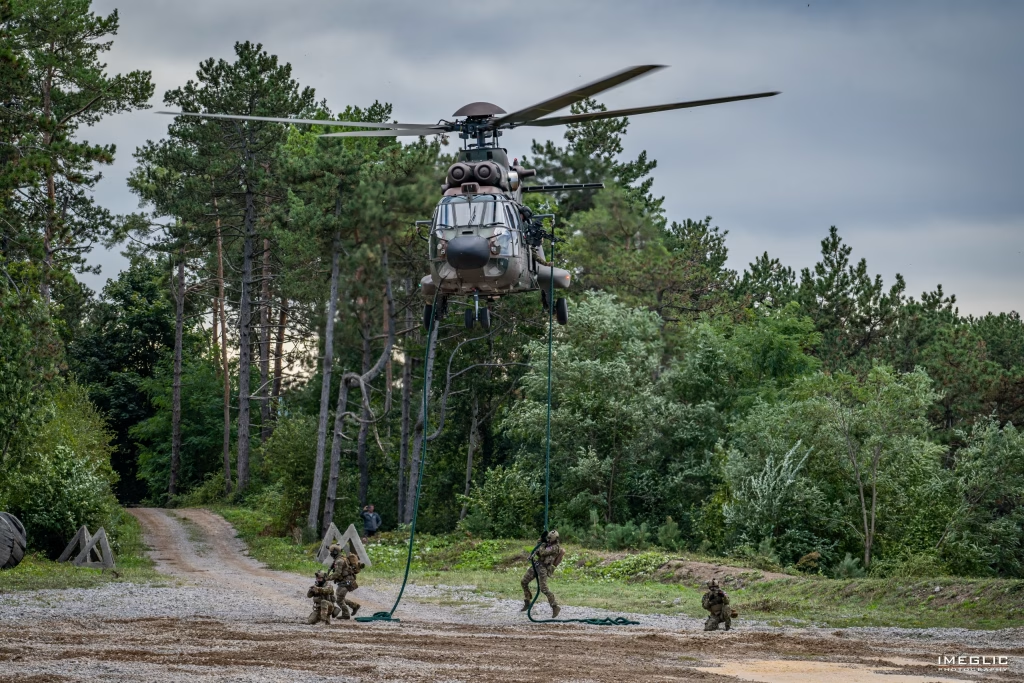

In addition to numerous dynamic demonstrations, visitors at the main venue had the opportunity to observe the operations and equipment of units from the Slovenian Armed Forces, Police, Civil Protection, and the Administration for Protection and Rescue. Furthermore, visitors could admire vintage vehicles from the Historic Association of Slovenian Police Officers, as well as military antiques owned by private collectors from Slovenia and Croatia. A particular highlight was the vintage firefighting vehicles from the Volunteer Firefighting Society Studeno.
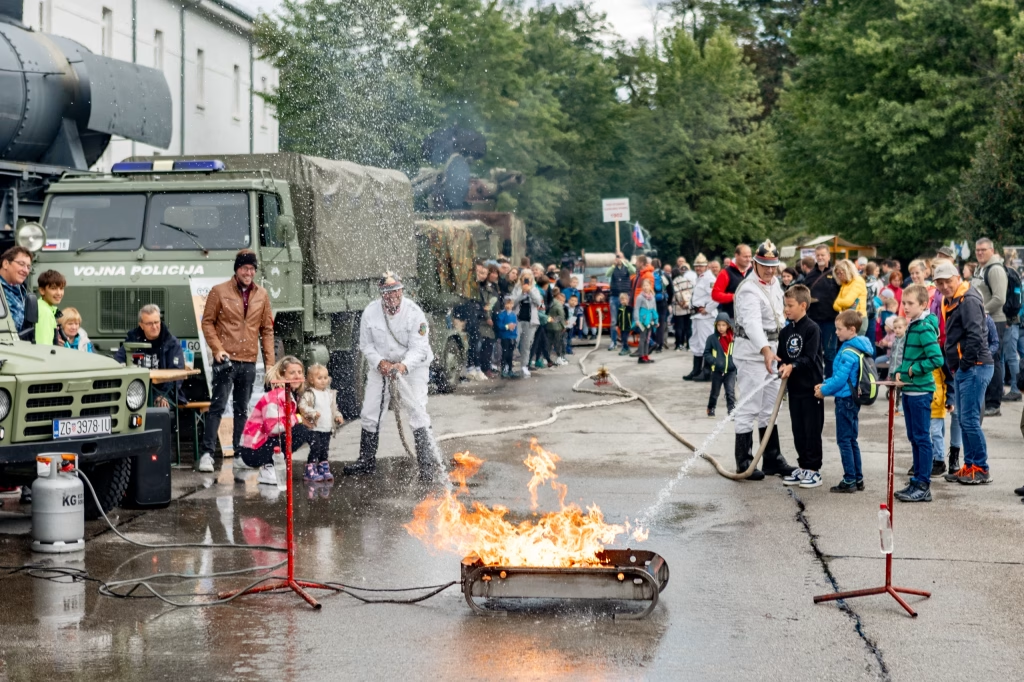
The festival was enhanced by a rich accompanying programme, including guided tours of the collections and exhibitions as well as the venues of History Weekend, a mini book fair featuring military history literature, a militaria fair, and workshops for children organised by the Park of Military History, the Inner Carniola Museum Postojna, the Ajdovščina Garage, and the Volunteer Firefighting Society Postojna. Dušica Kunaver, a collector of folk heritage, presented her new book The Army in Slovenian Folklore. Animal lovers also had a chance to enjoy demonstrations from the Postojna Search and Rescue Dog Club and the Napolitano Rehabilitation and Training Centre for Horses.
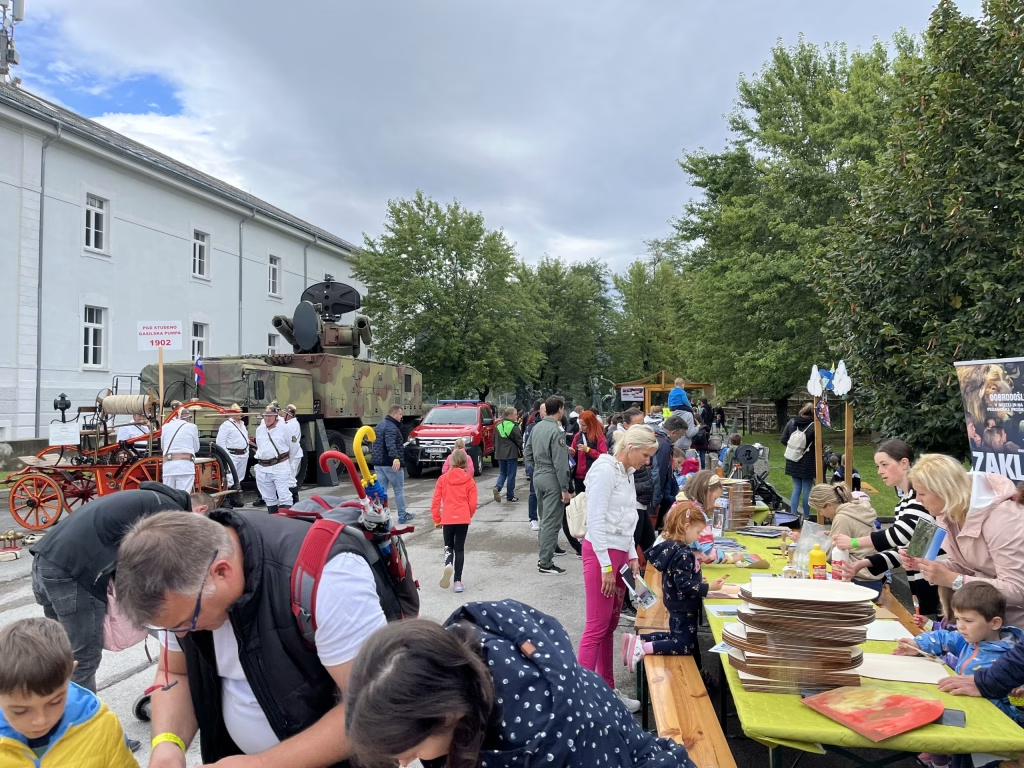
In Building D, which houses the Depots of the National Museums, visitors had the opportunity to tour the new exhibition Wheels of Fate with a guided tour. They also took advantage of other opportunities to explore the displayed items from the Museum of Contemporary History, the Technical Museum of Slovenia, and the National Museum of Slovenia.
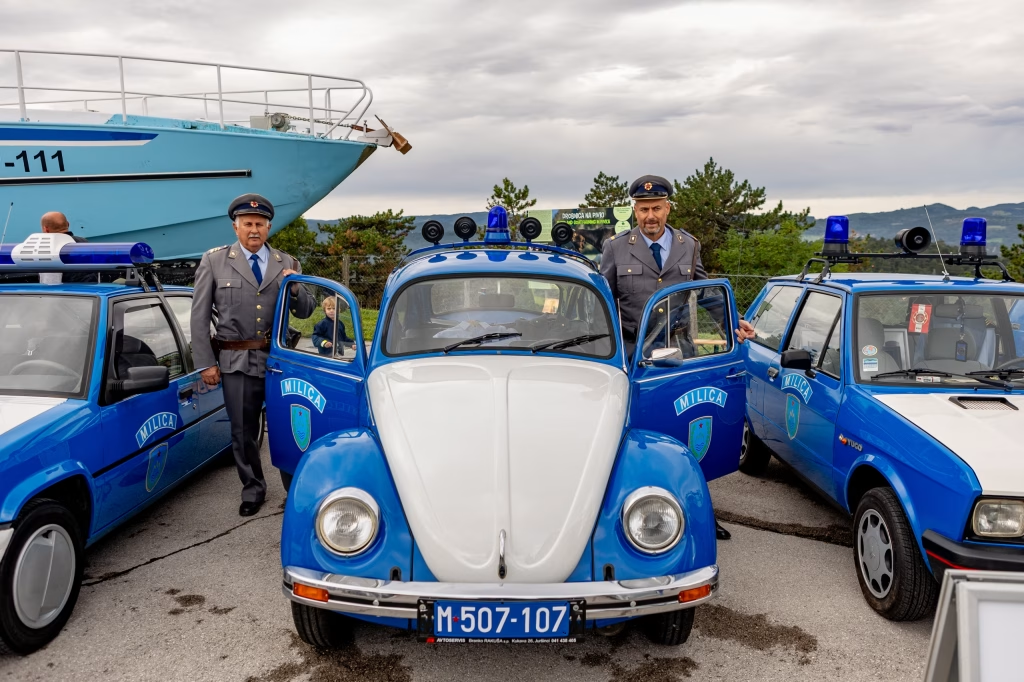
As part of History Weekend, the photographic exhibition of the Slovenian Armed Forces Museum titled Slovenian Army – In the Service of the Homeland was also renovated. This weekend marked the beginning of the exhibition from the Centre for the Management of the Living Mercury Heritage in Idrija, coinciding with the 30th anniversary of Antonij’s Tunnel in the Park.
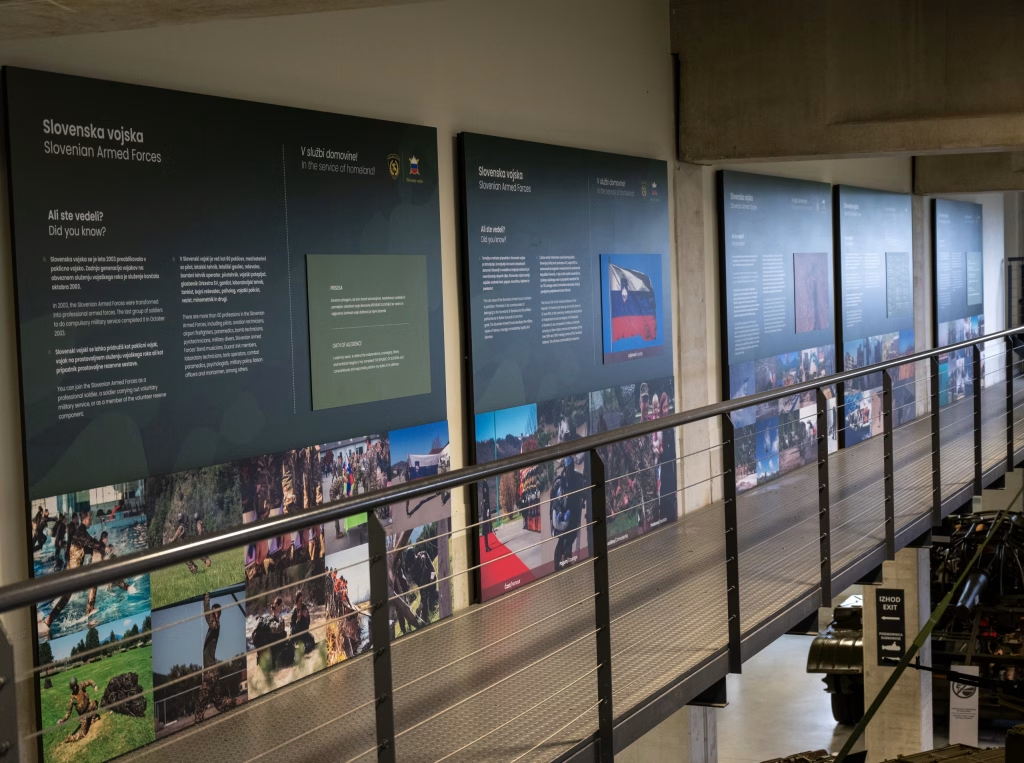
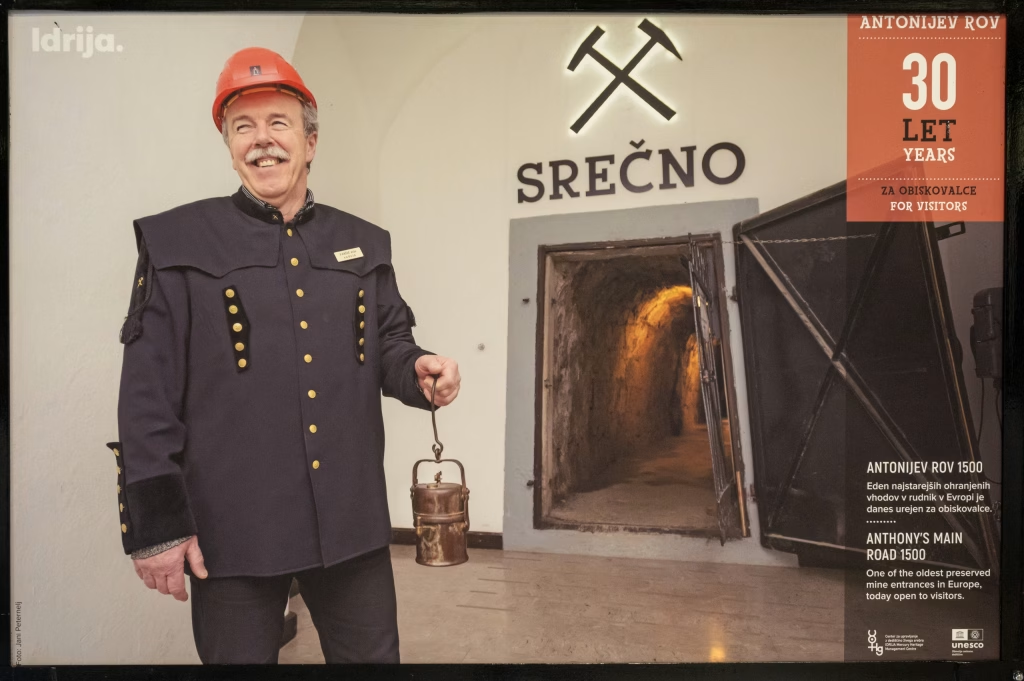
As part of the museum programme supported by the Ministry of Culture of the Republic of Slovenia, this year the Park placed special emphasis on adapting the museum exhibitions and collections for vulnerable groups. For individuals with mobility impairments, we provided a virtual tour of the interior of a submarine, a police vessel, and the fortification at Primož. Additionally, by the end of the year, we will offer virtual tours of the interiors of two armoured vehicles. For the blind and visually impaired, we created miniature models of our larger “carrying” exhibits, which visitors can handle to explore the details of the displayed vehicles through touch. Most miniatures are at a scale of 1:14. We also enhanced the lighting for the exhibition on the Enigma and the exhibition The Road to Independence for the visually impaired.
This year, we placed particular emphasis on deaf and hard-of-hearing visitors. With the assistance of Mr. Samo Dolanc, we adapted the guided tours of the museum collections and translated them into Slovenian sign language (SZJ). This allows visitors to scan QR codes with their mobile phones at eight locations in the Park of Military History, leading them to video guides in sign language. We also recorded a video guide in international sign language, which will be available to foreign visitors in the same manner until the end of the year.
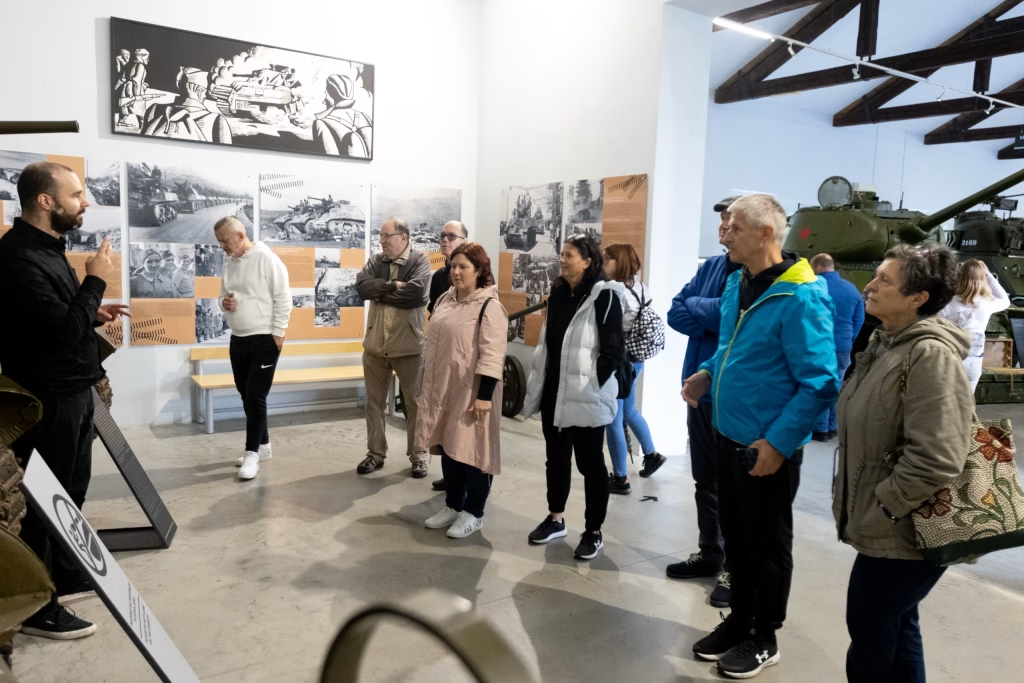
The History Weekend, which has taken on a new form following the former Military History Festival, attracted more than 5,000 visitors to Pivka this weekend. Visitors returned home enriched by a wealth of new museum experiences.


NOTICE FOR VISITORS
Dear visitors,
We would like to inform you that access to the Park of Military History Pivka will be difficult due to a partial road closure on Saturday, September 28, and a full road closure on Sunday, September 29.
Due to roadworks, a temporary traffic arrangement will be set up on the state road G1-6/339 Pivka–Ribnica from km 1.700 to km 2.000.
A partial road closure will be in place on Saturday, September 28, 2024, from 7:00 AM to 7:00 PM. Traffic will alternate one way with the help of traffic-dependent traffic lights.
A full road closure will be in place on Sunday, September 29, 2024, from 7:00 AM to 7:00 PM. Access to the Park will be possible either via the detour Pivka–Šembije–Ilirska Bistrica (state road R2 404) or via the route from the highway exit at Divača–Vremska dolina–Ribnica–Park of Military History (visitors are advised to choose state road 405 instead of 622).
Opening hours in October
The Park of Military History will be open in October from Monday to Friday between 10 a.m. and 4 p.m., and on Saturdays and Sundays between 10 a.m. and 6 p.m.
A prior reservation is required to visit the interior of the submarine and try out the flight simulator with MiG-21 aircraft, which is an additional museum offering. You can make a reservation by calling +386 (0)31 775 002 or emailing [email protected].
The Park of Military History also offers a motorhome stopover with eight parking spaces and well-maintained infrastructure. If you stay overnight, two people can visit the museum collections and exhibitions free of charge.
100 years of Franc Primožič
Franc Primožič (born 9 August 1924) was conscripted into the German army in 1942 and sent to the Eastern Front, from where he escaped to join the Soviet partisans. In 1944, he joined the 2nd Tank Brigade of the Yugoslav Partisans (NOVJ) and received training as a tank operator in the Soviet Union. Initially, he became a driver and later the commander of a T-34 tank. He participated in the breakthrough of the Srem Front and several other battles, during which his tank survived two direct hits from German anti-tank weapons. After the war, he was required to complete his military service in the Yugoslav Army and was only demobilised at the end of 1947. Considering that he spent a full three years in and around the T-34 tank, as part of the celebration of his 100th birthday, we took him for a ride in a museum example of this legendary tank at the Park of Military History.
The vibrant centenarian from Kamnik has experienced an incredible life journey, starting with his childhood when, as a pre-war refugee from the Primorska region, he relocated from Gorizia to Kamnik, to his conscription into the German army at the outbreak of the Second World War, desertion to the Soviet partisans on the Eastern Front, and subsequent service in the Yugoslav army as a tank operator. In his poignant testimony, he also touched upon the difficult post-war period, which he personally endured as a former member of the Hitler Youth and a former Soviet soldier. Despite the violent experiences of fascism, Nazism, and the post-war regime, and the numerous trials he faced as a living witness to history, Franc Primožič never lost his optimism or zest for life. Exactly one year ago, he shared his life story in the Atmosferci podcast.
On the occasion of his 100th birthday, Franc Primožič was awarded honorary membership of the Friends of the Park of Military History Association in recognition of his great support for the Park of Military History. Franc Primožič is a living witness to the historical events of an entire century, and through his testimonies, he continually reminds us of the importance of striving for peace in the world. You can read more about Franc Primožič’s centenary in the article on 24ur.com.
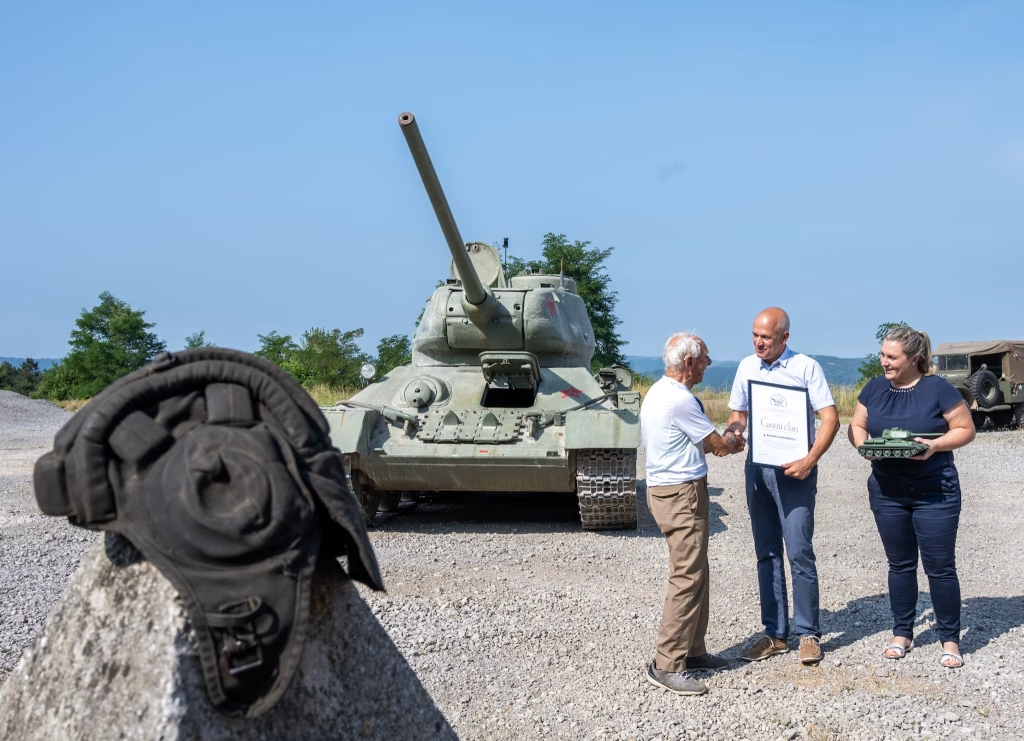
The Opening of the Exhibition »Warsaw Rising 1944«
The Warsaw Rising of 1944 represents one of the most tragic, yet also one of the most heroic periods in the history of the Polish nation. At the end of July 1944, the Polish government in exile decided to initiate a military operation Home Army (Armia Krajowa) with the objective of liberating the Polish capital, Warsaw. The aim was to outflank the advancing Red Army and thus establish the conditions for an independent and sovereign Polish state after the end of the war. The uprising began on 1 August 1944 and was expected to last only a few days. However, Stalin ordered a halt to the Red Army’s penetration of the Vistula River, thus forcing the insurgents, after initial military successes, to fight the Germans alone.
The Warsaw Uprising lasted 63 days and its outcome was appalling. Over 15,000 Home Army soldiers were fallen, and the Germans also killed more than 180,000 inhabitants of Warsaw and deported or imprisoned more than half a million in concentration camps. Many buildings in the city centre had already been destroyed in the fighting, but the Germans nevertheless demolished much of the city in the following weeks in a planned demolition campaign.
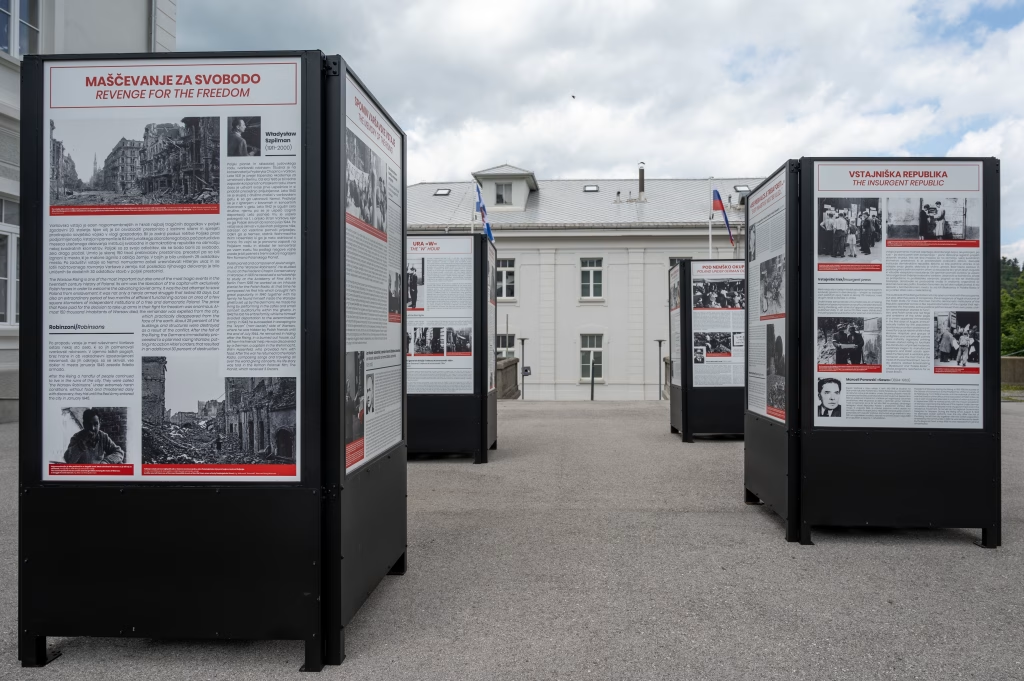
Despite the considerable human and material costs, the Warsaw Rising continues to be a symbol of Polish resistance to foreign domination and a testament to the desire for freedom, democracy, and sovereignty for the Polish state among Poles even after 80 years.
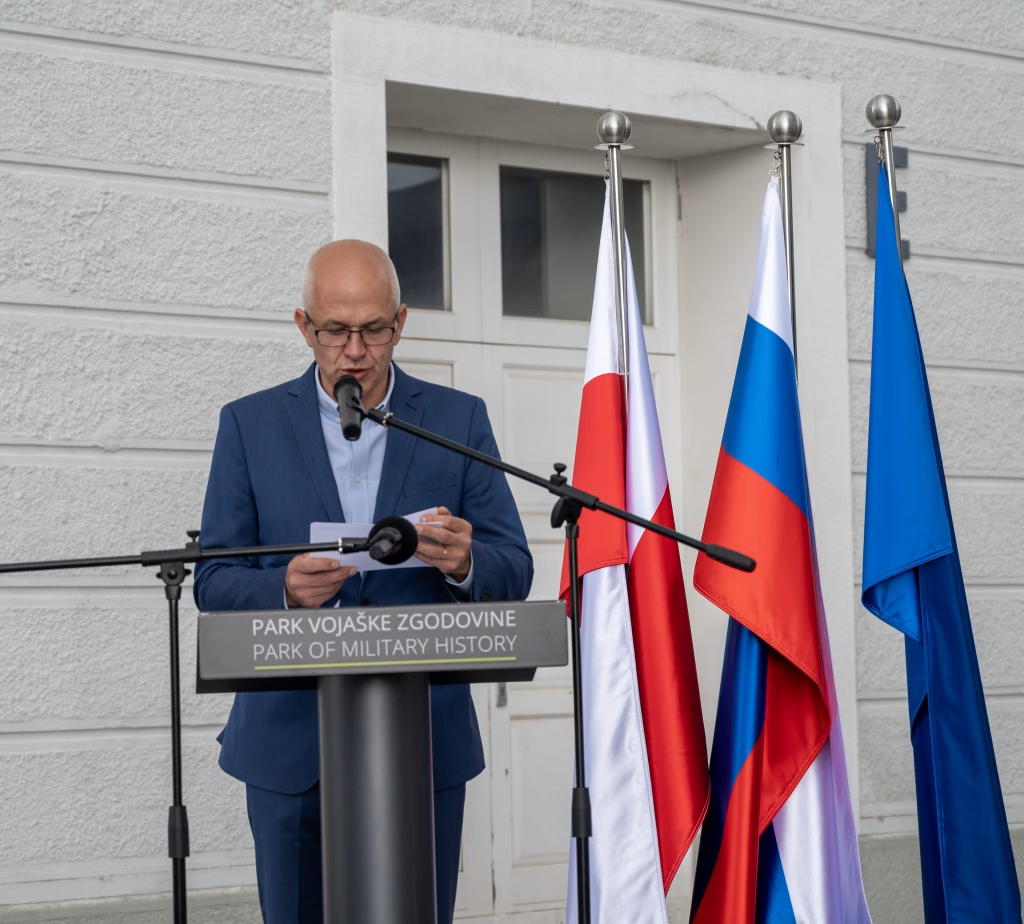
At the suggestion of the Polish Embassy in Slovenia, a museum exhibition organised by the Warsaw Rising Museum was set up in the Park of Military History to commemorate the 80th anniversary of the Warsaw Rising. The exhibition was opened on Saturday, 15 June, as the main event of this year’s Summer Museum Night at the Park of Military History.

The exhibition was opened by the Ambassador of the Republic of Poland in Slovenia, His Excellency Krzysztof Olendzki. In his opening address, he stressed that the message of the Warsaw Rising is still relevant today and expressed his pride that the exhibition will be hosted at the Park of Military History to preserve the memory of this tragic period in Polish history and to present it to the Slovenian public.
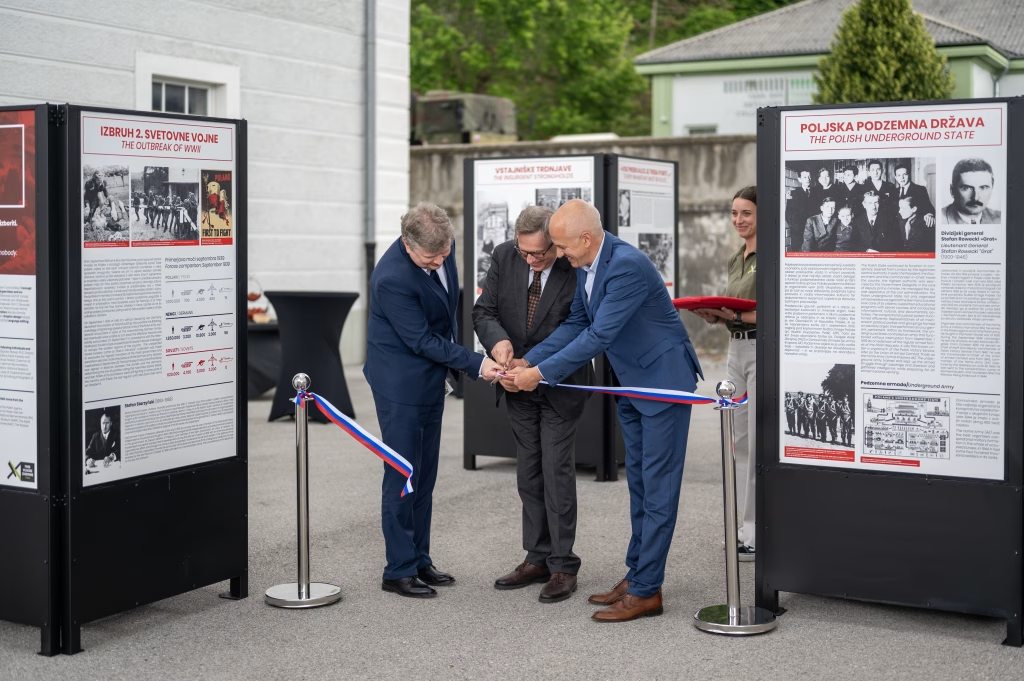
The need to raise awareness about the significance of the Warsaw Rising was also pointed out by the Director of the Park of Military History, M.A., “Why, after 80 years, should we remember one of the most tragic and shocking chapters of Polish history? A chapter full of endless suffering, streams of blood of Home Army soldiers and the blood and tears of wives, children, the elderly… A chapter full of the ruins of a demolished city and the smoke of burnt corpses. But the Warsaw Rising was more than that. It was a true outburst of heroism, of love of country, of love of freedom, of commitment to democracy. That is why I am delighted and can hardly contain the Park of Military History team’s pride of the fact that we are able to host this exhibition. Its opening marked this year’s Summer Museum Night, and the installation will enrich the entire season for our museum.”
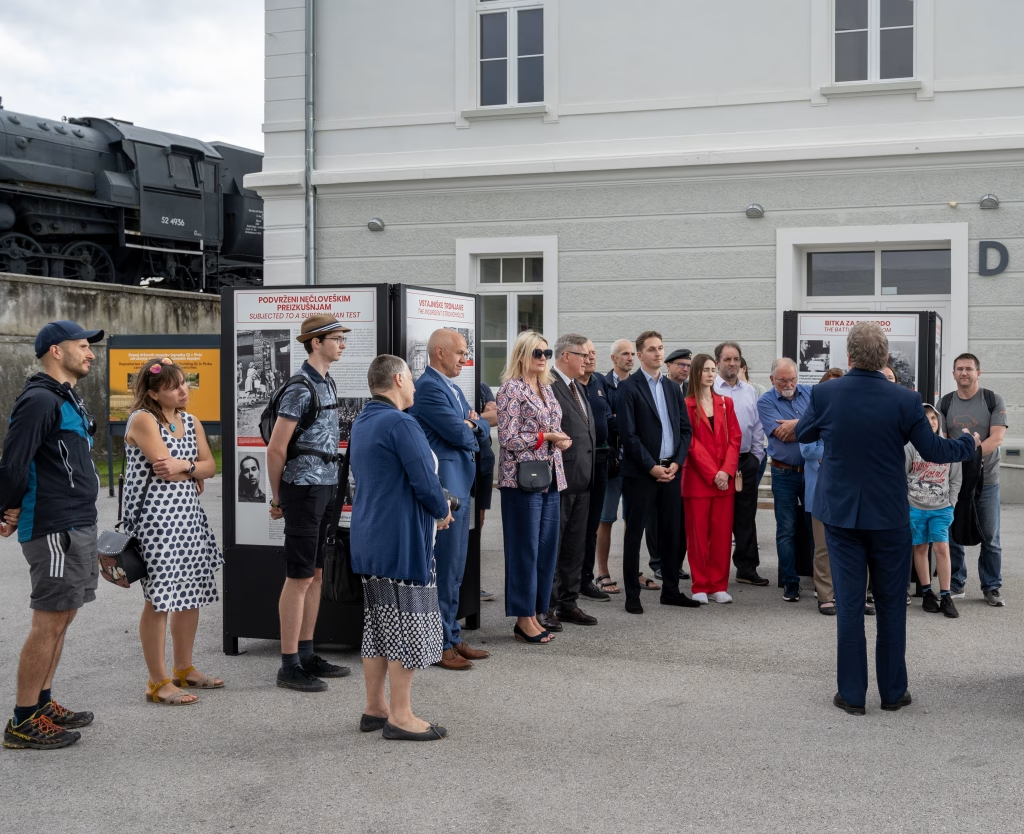
Dr Karol Mazur, Head of the Education Department of the Warsaw Rising Museum, attended the opening of the exhibition and guided the guests of honour and the first group of visitors through the exhibition.
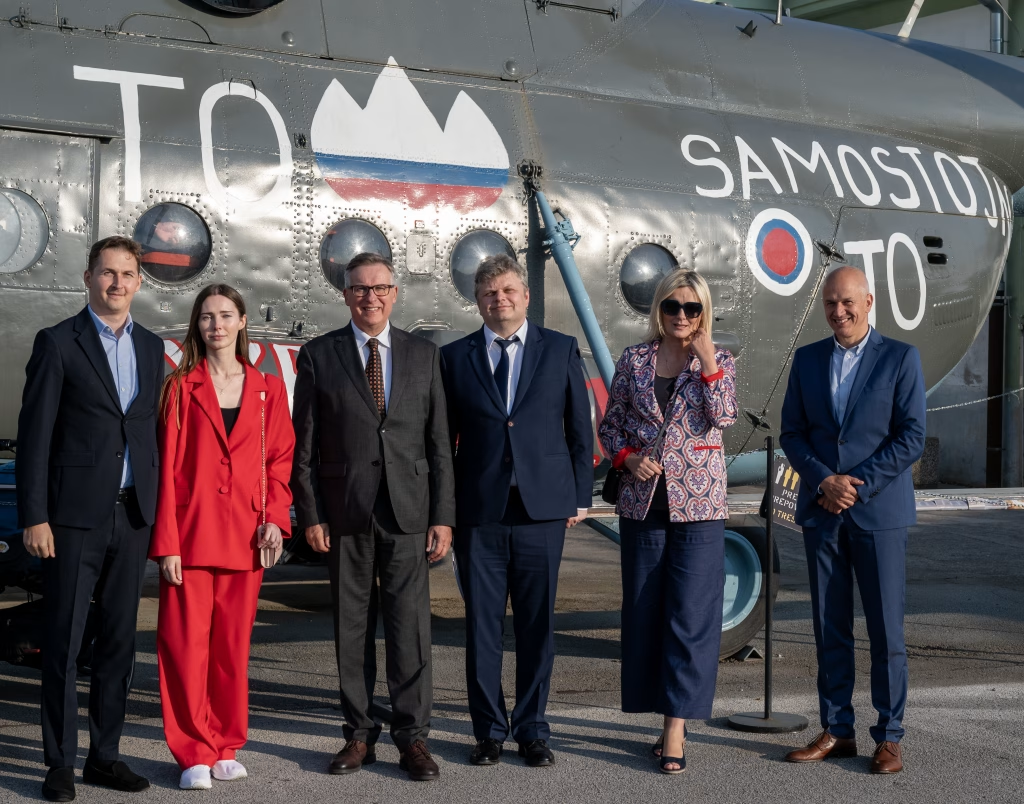
The exhibition will be on display at the Park of Military History until October. It is accompanied by two films, a short film “City of Ruins” (duration: 6 minutes), which is screened daily, and a unique reconstructed documentary “Warsaw Rising”, directed by J. Komasa (duration: 83 min), which will be screened every Saturday and Sunday.
